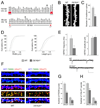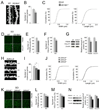Palmitoylation-dependent neurodevelopmental deficits in a mouse model of 22q11 microdeletion
- PMID: 18836441
- PMCID: PMC2756760
- DOI: 10.1038/nn.2204
Palmitoylation-dependent neurodevelopmental deficits in a mouse model of 22q11 microdeletion
Abstract
Individuals with 22q11.2 microdeletions have cognitive deficits and a high risk of developing schizophrenia. Here we provide evidence that primary hippocampal neurons from a mouse model of 22q11.2 deletion (Df(16)A(+/-) mice) have decreased density of dendritic spines and glutamatergic synapses, as well as impaired dendritic growth. These deficits were prevented by introduction of the enzymatically active ZDHHC8 palmitoyltransferase encoded by a gene in the 22q11.2 locus, and they were also observed in primary cultures from Zdhhc8-deficient mice. Many of these deficits were also present in the hippocampi of adult Df(16)A(+/-) and Zdhhc8-deficient mice. Finally, we provide evidence that PSD95 is one of the substrates of ZDHHC8. Our analysis reveals that 22q11.2 microdeletion results in deficits in neuronal development and suggests that impaired neuronal protein palmitoylation contributes to many of these deficits.
Figures







References
-
- McDonald-McGinn DM, et al. Phenotype of the 22q11.2 deletion in individuals identified through an affected relative: cast a wide FISHing net! Genetics in Medicine. 2001;3:23–29. - PubMed
-
- Woodin M, et al. Neuropsychological profile of children and adolescents with the 22q11.2 microdeletion. Genetics in Medicine. 2001;3:34–39. - PubMed
-
- Bearden CE, et al. The neurocognitive phenotype of the 22q11.2 deletion syndrome: selective deficit in visual-spatial memory. J. Clin. & Experim. Neuropsychol. 2001;23:447–464. - PubMed
Publication types
MeSH terms
Substances
Grants and funding
LinkOut - more resources
Full Text Sources
Other Literature Sources
Medical
Molecular Biology Databases
Miscellaneous

